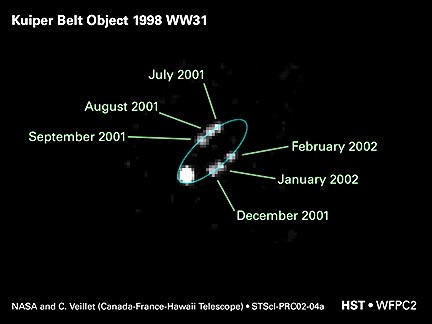
July 11, 2002 Baltimore, Maryland One of the most recent discoveries in our solar system, NASA reports, is an "intriguing new class of objects, dim and fleeting, which travel in pairs in the frigid, mysterious outer realm of the solar system called the Kuiper Belt." These Kuiper Belt Objects (KBOs), inhabit a region that begins around Neptune and extends out more than nine billion miles. At least half of the short-period comets that come through the solar system, around the sun and back out again are from the Kuiper Belt, named after astronomer Gerard P. Kuiper who headed the Lunar and Planetary Laboratory at the University of Arizona until his death in 1973.
Click here to subscribe and get instant access to read this report.
Click here to check your existing subscription status.
Existing members, login below:
© 1998 - 2024 by Linda Moulton Howe.
All Rights Reserved.

